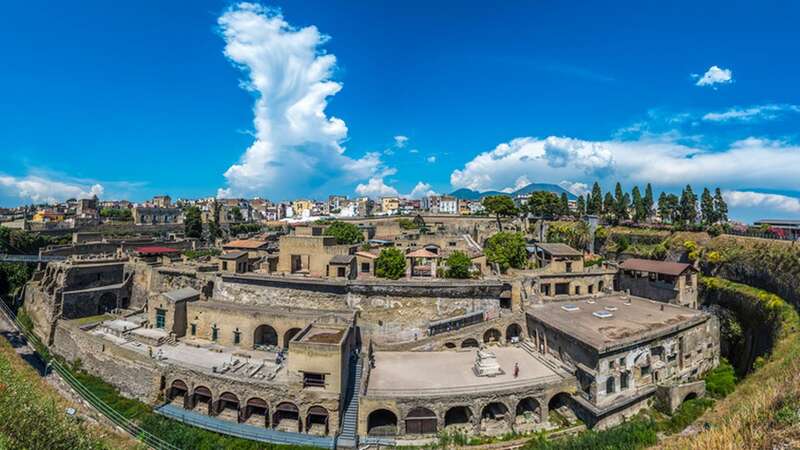
An ancient beach in Italy that was buried by the Mount Vesuvius eruption nearly 2,000 years ago has been reopened after extensive restoration works.
Visitors can now walk freely over the entire surface of the beach in the Archaeological Park of Herculaneum and immerse themselves in the city which was devastated by the volcanic blast in 79AD.
The Italian Minister of Culture, Gennaro Sangiuliano, said: "This site has been hugely redeveloped and is becoming a gem. We are within one of the most important archaeological areas in the world with Pompeii, Oplontis and Herculaneum and we are also working a lot in terms of resources. The Archaeological Park of Herculaneum is a great historical memory and the value of history."
 Restoration has been the focus of a multi-year project in Herculaneum (Anadolu Agency via Getty Images)
Restoration has been the focus of a multi-year project in Herculaneum (Anadolu Agency via Getty Images)In recent decades, the Herculaneum area has been impacted by corrosion and decay, caused by a mixture of natural factors, which had transformed the beach into a sort of marsh.
The director of the Archaeological Park, Francesco Sirano, commented: "The ancient beach is an extraordinary and unique place in the world. To preserve it for the future, we have reduced the risk of continuous flooding and the dangers to the stability of the excavation fronts and the seafront of the ancient city."
 Late Pope lies in state at Vatican as thousands queue to pay respects
Late Pope lies in state at Vatican as thousands queue to pay respects
"After three years of intense work aimed at enhancing the ancient beach of the Herculaneum excavations, through the drainage and filling of the area formerly occupied by the beach, visitors are given the opportunity to freely access the entire area and to understand the dynamics that led to the burial of the city," he added.
The town of Herculaneum, near Pompeii, was covered by a three-metre blanket of volcanic ash after Mount Vesuvius erupted. More than 1,000 people are thought to have died following the eruption.
The beach was originally discovered between the 1980s and 1990s, when skeletons of residents from the town were found during an excavation.
In 2021, Herculaneum hit the news after the 'last fugitive' was discovered — a skeleton of a man, around the age of 40, thought to have been attempting to escape towards the seas with a bag containing precious objects. In addition to the 'last fugitive', shrubs, roots, parts of ceilings and boats and fallen trees, were found preserved on the beach.
At the time of the eruption, the burning cloud would have had a temperature of over 400° and a speed of 80 km/h. The volcanic mud from Vesuvius would have then covered the remains of bodies, sealing them in the position they were in at the time of death.
Check out by signing up to our free weekly newsletter.
Read more similar news:
Comments:
comments powered by Disqus

































